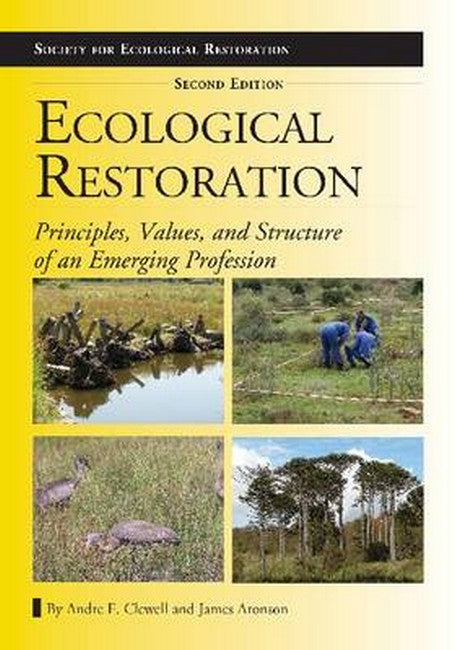1
/
of
1
Ecological Restoration, Second Edition 2/e
Ecological Restoration, Second Edition 2/e
SKU:9781610911689
Regular price
$68.79 AUD
Regular price
$85.99 AUD
Sale price
$68.79 AUD
Unit price
/
per
Taxes included.
Shipping calculated at checkout.
Share
Ecological restoration is a rapidly growing discipline that encompasses a wide range of activities and brings together practitioners and theoreticians from a variety of backgrounds and perspectives, ranging from volunteer backyard restorationists to highly trained academic scientists and professional consultants. This book offers a comprehensive and coherent account of the field for everyone who initiates, finances, designs, administers, issues government permits for, manages, and implements ecological restoration projects, and all those who serve in supportive roles. Originally published in 2007, this revised and reorganized edition brings the book up to date with new developments and current trends in the field.
In a lively, personal fashion, the authors discuss scientific and practical aspects of the field as well as the human needs and values that motivate practitioners. The book identifies fundamental concepts upon which restoration is basedconsiders the principles of restoration practiceexplores the diverse values that are fulfilled with the restoration of ecosystemsreviews the structure of restoration practice, including the various contexts for restoration work, the professional development of its practitioners, and the relationships of restoration with allied fields and activities
The book also includes case studies and Virtual Field Trips around the world that illustrate points made in the book with on-the-ground information from those who were intimately involved with the projects described. Throughout, ecological restoration is conceived as a holistic endeavor, one that addresses issues of ecological degradation, biodiversity loss, personal engagement, and sustainability science simultaneously, and draws upon cultural resources and local skills and knowledge in restoration work.
In a lively, personal fashion, the authors discuss scientific and practical aspects of the field as well as the human needs and values that motivate practitioners. The book identifies fundamental concepts upon which restoration is basedconsiders the principles of restoration practiceexplores the diverse values that are fulfilled with the restoration of ecosystemsreviews the structure of restoration practice, including the various contexts for restoration work, the professional development of its practitioners, and the relationships of restoration with allied fields and activities
The book also includes case studies and Virtual Field Trips around the world that illustrate points made in the book with on-the-ground information from those who were intimately involved with the projects described. Throughout, ecological restoration is conceived as a holistic endeavor, one that addresses issues of ecological degradation, biodiversity loss, personal engagement, and sustainability science simultaneously, and draws upon cultural resources and local skills and knowledge in restoration work.
About the Author
About the Author
Couldn't load pickup availability


